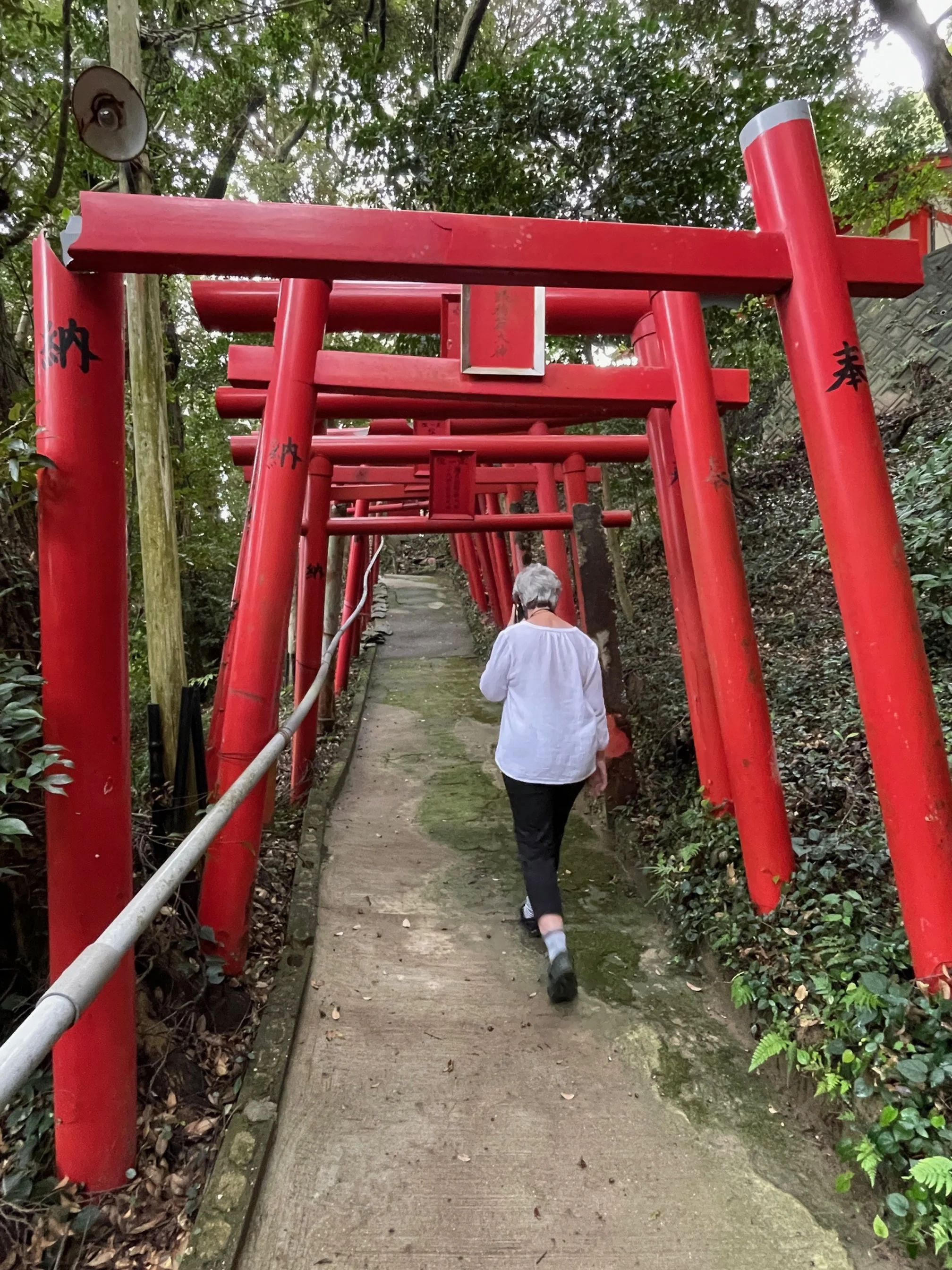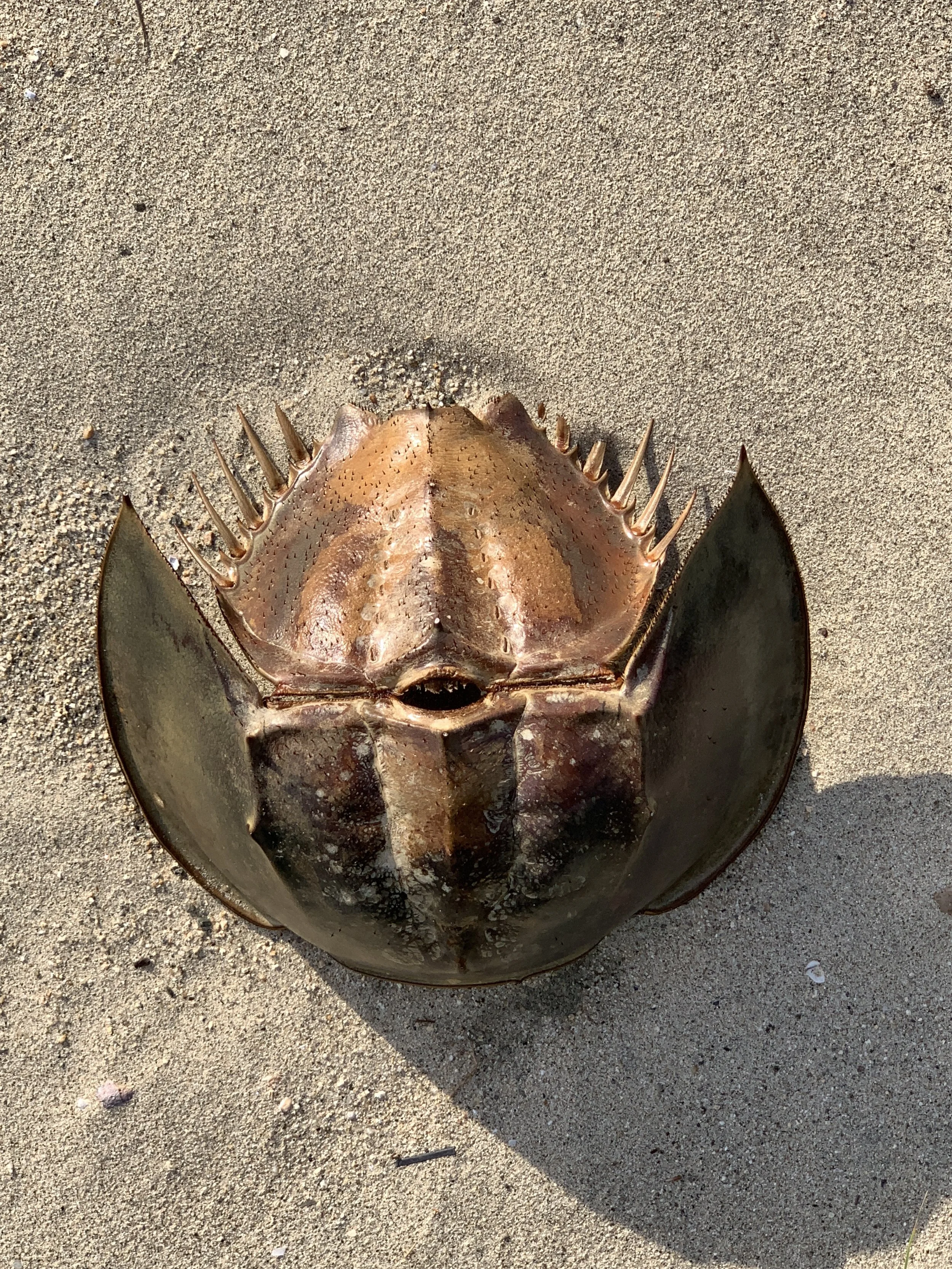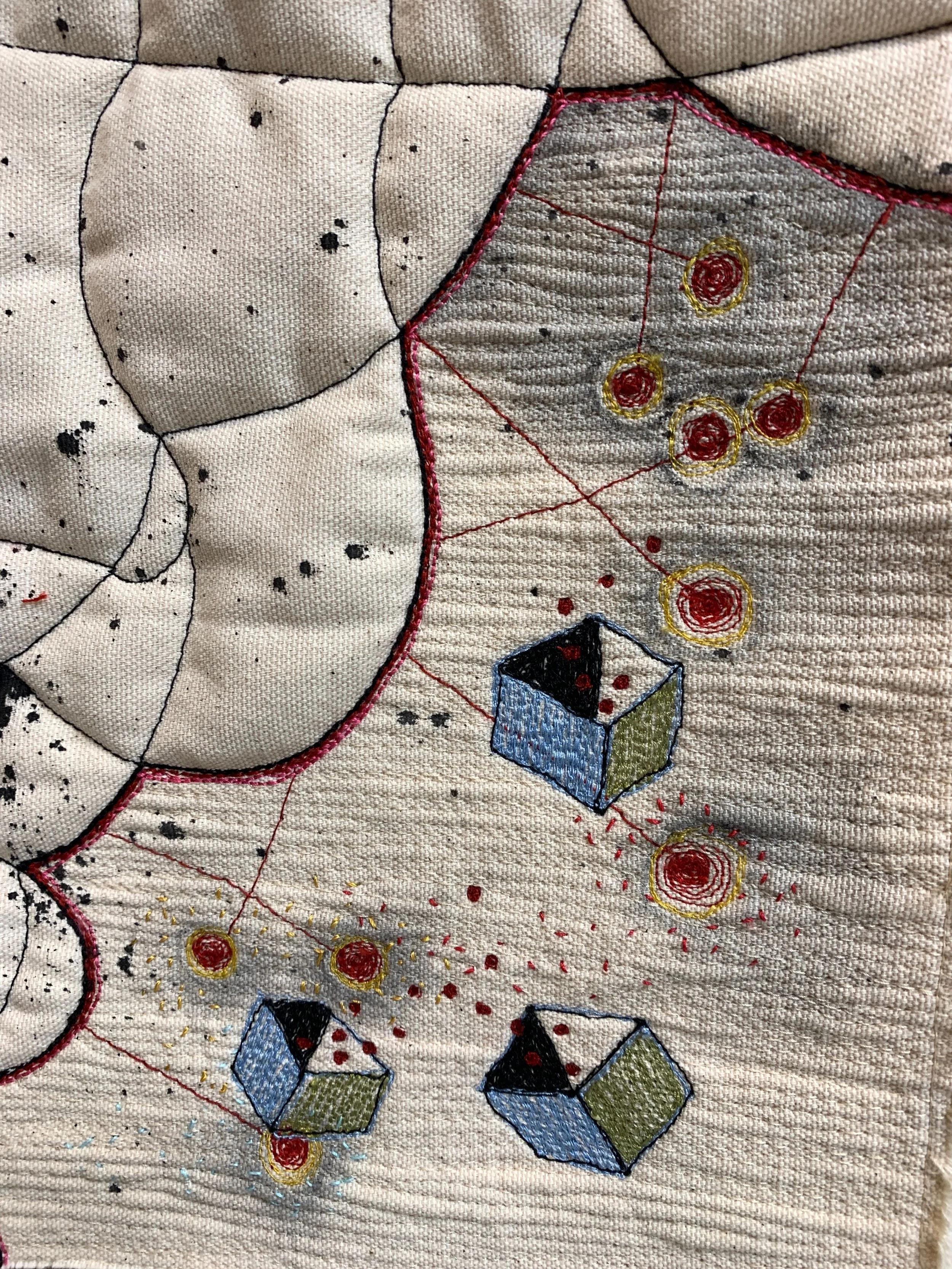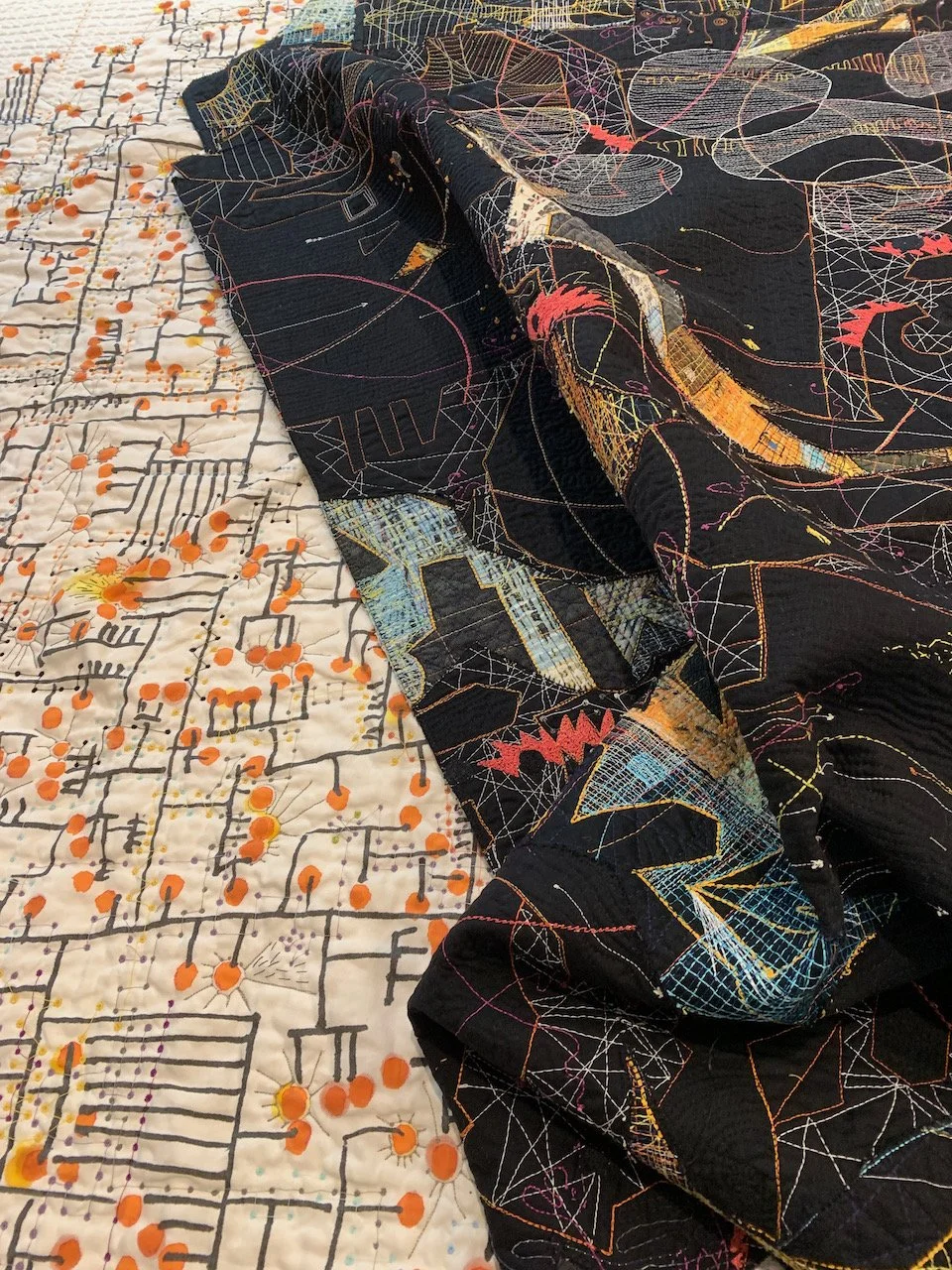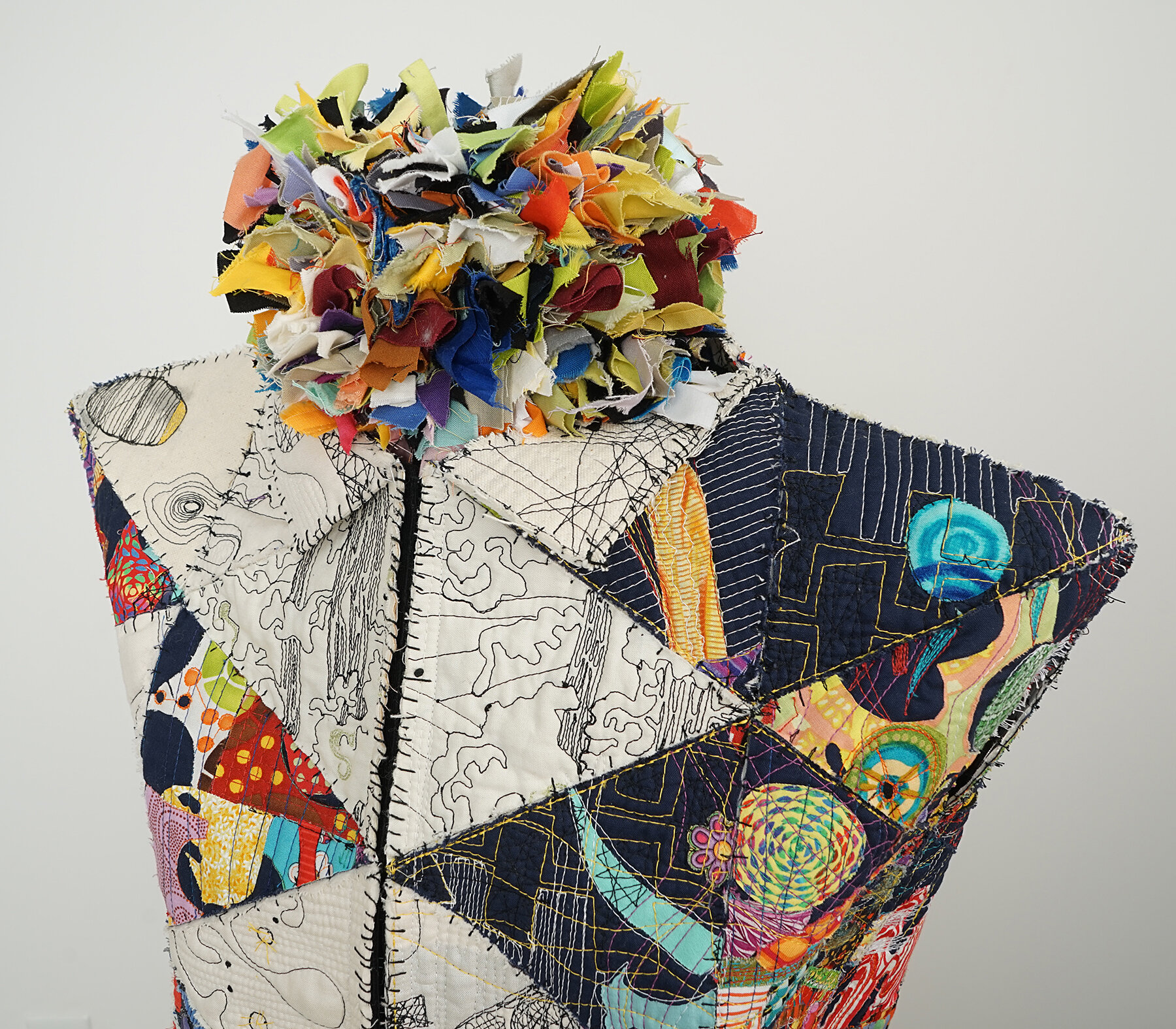I have spent a month in my studio ping-ponging from one thing to another with an itchy feeling of missing the ball every time. No focus, no inspiration, nothing. I did the usual exercises to jump start my ideas: cleaned the studio, organized my thread drawer, read about other artists, and walked aimlessly through the neighborhood with my phone camera.
Nothing.
This often happens after finishing a piece that consumes my imagination. I had just finished Encounter, a piece that really birthed itself made up of pieces of canvas on which I had dribbled paint and ink. After that cathartic experience I wasn’t sure where to turn for the next inspiration.
Encounter, 34x41, 2021, Paula Kovarik
I needed to move into a new headspace. A friend of mine gifted me yards of Silk Noil. The fabric is luscious, soft and raw looking. I decided to use it to revisit an idea I have worked on before: exploring marks that could illustrate words not spoken. Inspired by hieroglyphs, runes and Arabic script this visual language can be a way to communicate broader concepts.
Glyphs, 27x18, Paula Kovarik, 2017
Better Not Said, 41x26, Paula Kovarik, 2019
I started with a drawing to remind myself how these marks can be put together. Generally I try not to have a preconceived notion about how they should look. Instead I draw each mark in a random way then start to fill in the spaces that become available. I have noticed that I naturally follow an implied north/south east/west underpinning. I wonder why that is? I also like connecting the disparate shapes with unexpected lines.
Glyphs doodling.
Once satisfied with the density of the marks and the feel of making them I was ready to try it with stitch. I set up three 21”x21” silk noil sandwiches with some wool batting, drew a chalk circle onto each one and started stitching. Here are the results.
I don’t spend a lot of time on these exercises. Each square takes about two days to come alive. Using a neutral thread that matches the fabric to create the outer texture defines the circle a bit more and adds an element of energy to the composition. I don’t bury the threads on those end points preferring instead to use my machine’s automatic cutter that knots the threads on the underside. The back is not pretty.
I’m not sure I have broken the cycle of ping ponging. I am about to travel and teach so that might bring more inspiration when I return. Hope so.
